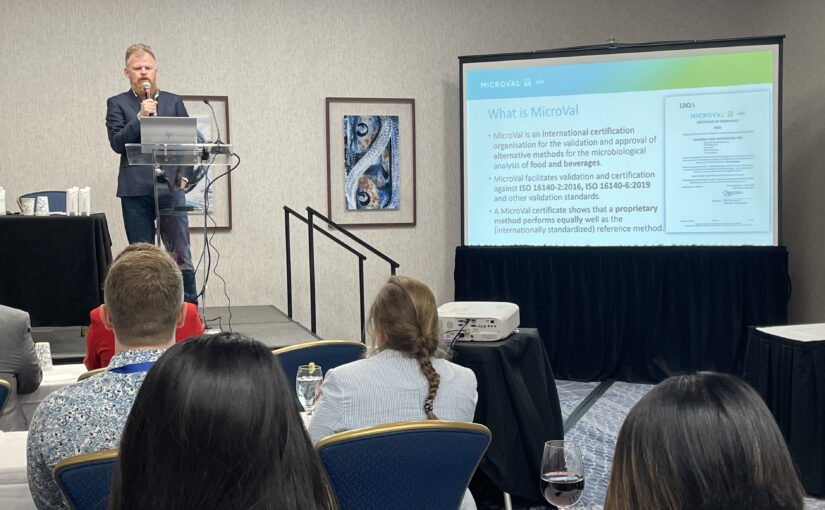With 2024 coming to an end, MicroVal reflects on a year of significant achievements and growth.
Team Expansion: This year, we welcomed three new members to our team: Leah Zitman, Yolanda Noort, and Eric Kamst, who have joined Joost Witsenburg and Suzanne de Jong in strengthening our secretariat. Additionally, we expanded our MVTC with four new members, bringing the total to 29.
International Presence: MicroVal actively participated in international events, presenting at the IAFP conference in Geneva and the AOAC conference in Baltimore. These platforms allowed us to introduce MicroVal, share success stories of manufacturers who validated their test kits with us, and present the link to legislation, cooperation with AOAC, and larger test portion sizes.
Certification Milestones: Thirteen MicroVal certificates have been issued to Shimadzu Diagnostics Corporation, Merck MilliporeSigma, Neogen Corporation, Kikkoman Biochemifa Company, Foss Analytical A/S, and Hygiena Diagnostics GmbH. Congratulations to all for achieving these certifications!
New Initiatives: We launched the MicroVal Community, an informal network for anyone interested in the validation of alternative microbiological methods. Additionally, we introduced MicroVal Rules 9.4, which includes validation against EN-ISO 16140-7, the establishment of working groups, and an emergency validation protocol.
We extend our heartfelt thanks to everyone involved in our journey this year. Wishing you a wonderful holiday season and a happy new year 2025!









